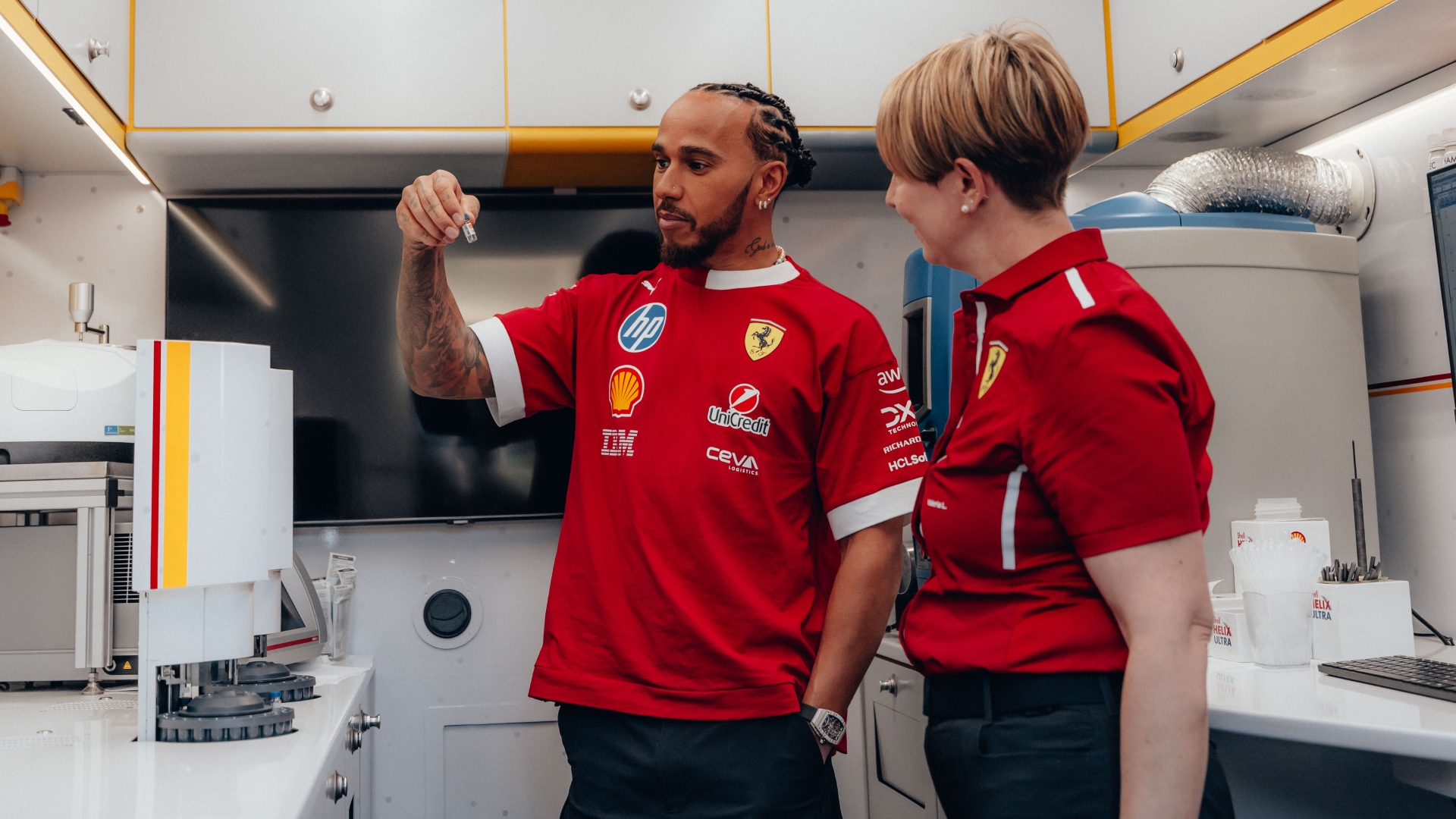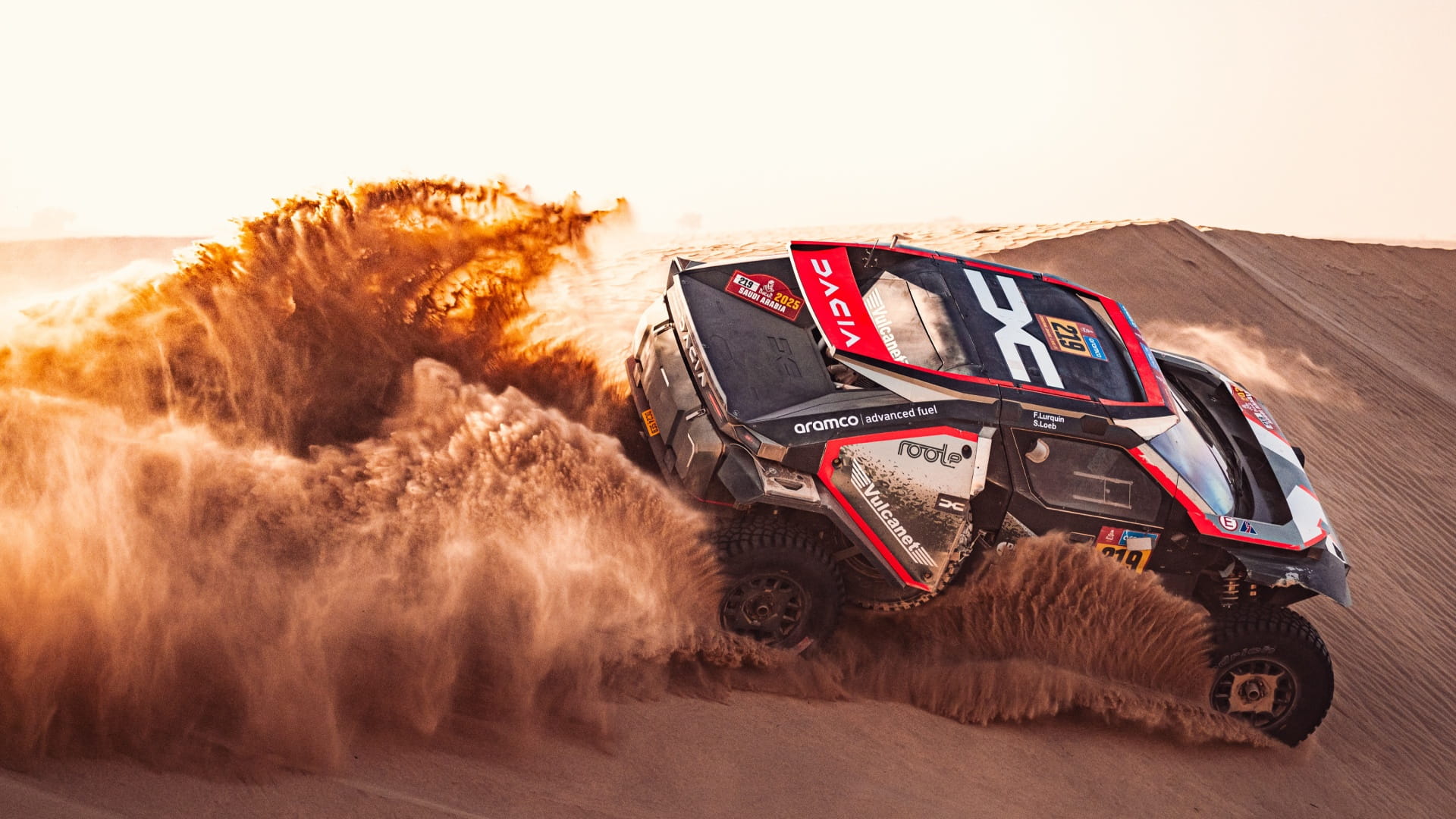Car
How does a rear wing work and what makes the Formula 2 rear wing unique?
by Samarth Kanal
7min read
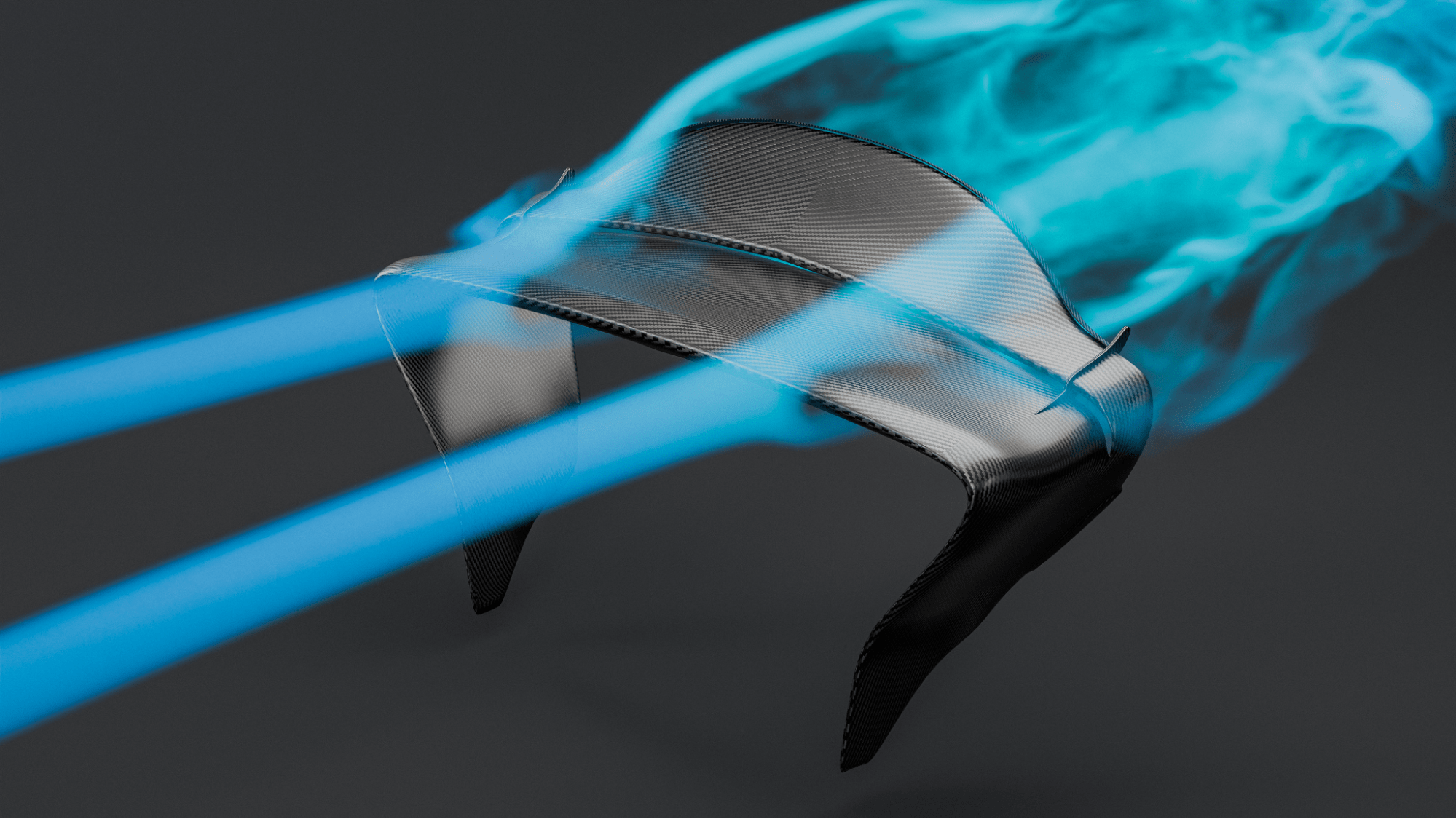
Since rear wings were attached to Formula 1 cars in the late 1960s, the aerodynamic device has become an almost universal feature of motorsport machinery, including Formula 2. Here’s how the rear wing works.
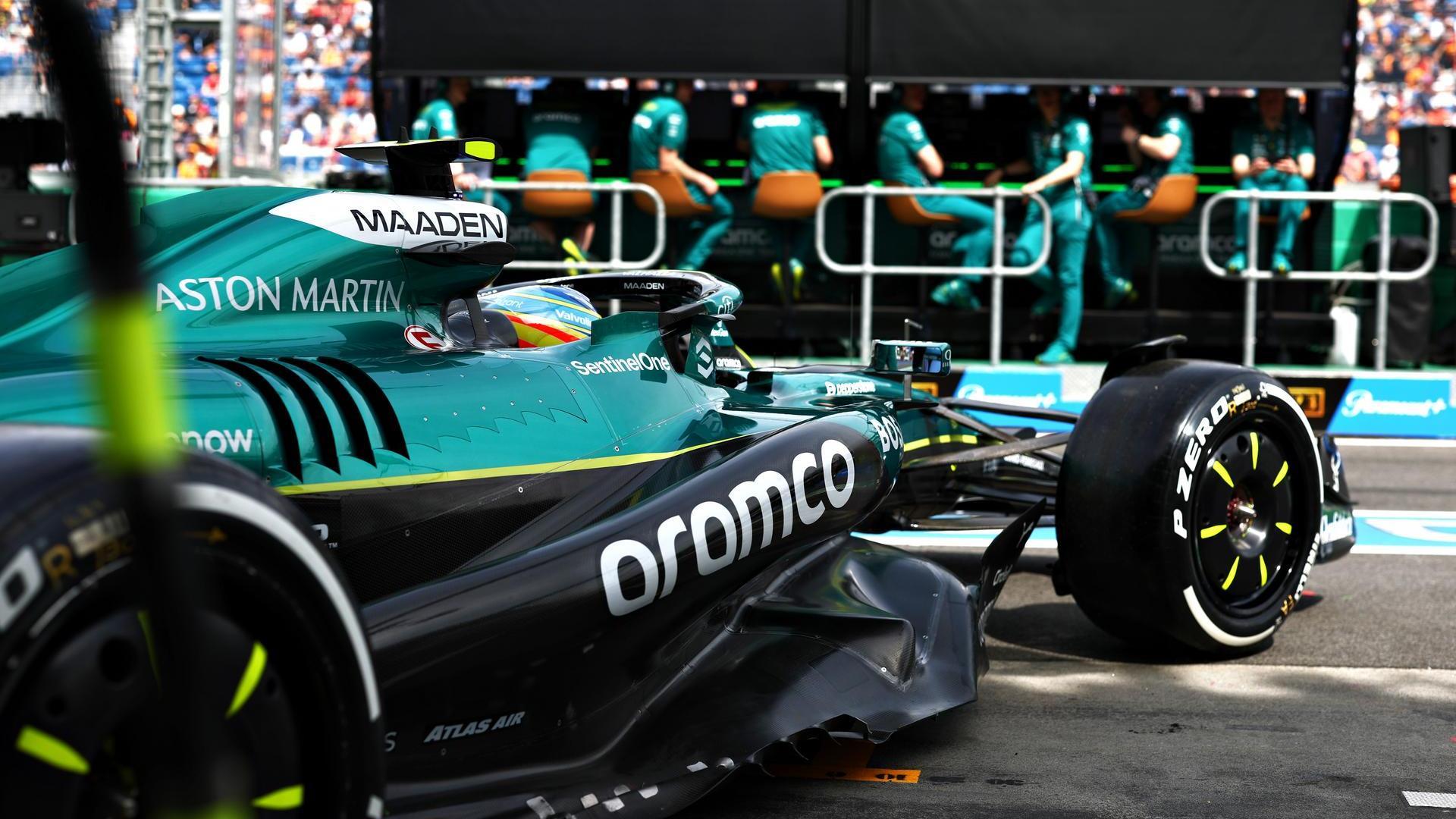
Sign up for a newsletter and we'll make sure you're fully up-to-date in the world of race technology
In 2024, F2 brought a new car to the track with a host of new safety and performance features. The new car turned heads, and much of that was because of the wing on the rear.
Unlike the wings on F1 cars, F2 wings have a curved main flap that gives the car a distinctive look - but this design is far from superficial.
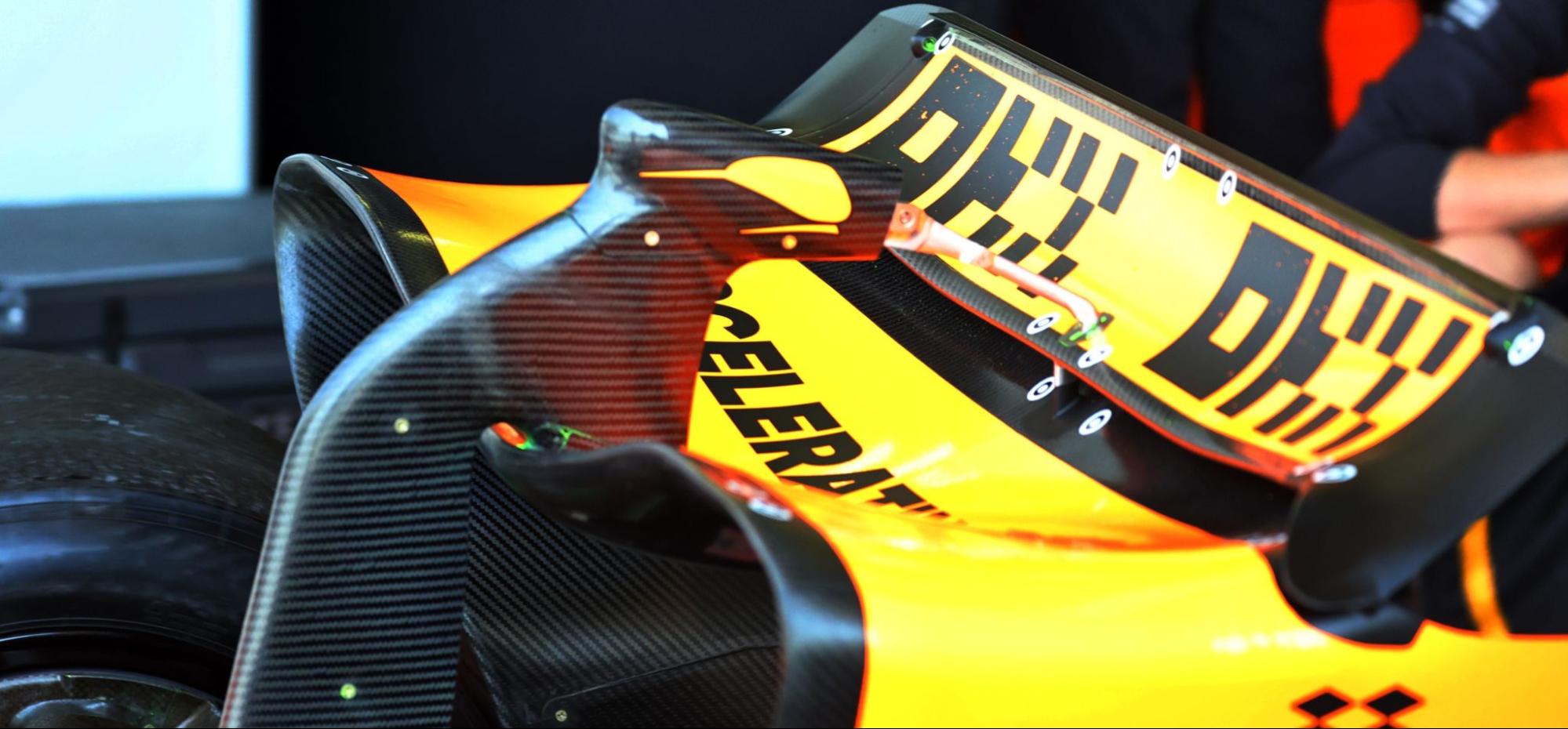
A close-up view of the 2025 McLaren MCL39 Formula 1 car rear wing
Why are rear wings important?
Rear wings are large planes above the back of the car that provide aerodynamic grip. This is traction formed by downforce that is generated by bodywork.
Downforce is generated by a surface that has an area of low-pressure airflow underneath and an area of high-pressure airflow above. Just like the front wing, the rear wing generates downforce in the same way.
The front wing is the first point of contact between the car and air and therefore it channels air under the floor, over the nose, and around the sidepods - which is why it’s set so low down on single-seaters.
Air flows over the nose, sidepods, engine cover, and to the rear wing, which is mounted high up on most single-seater cars, with its highest point almost parallel with the top of the engine cover.
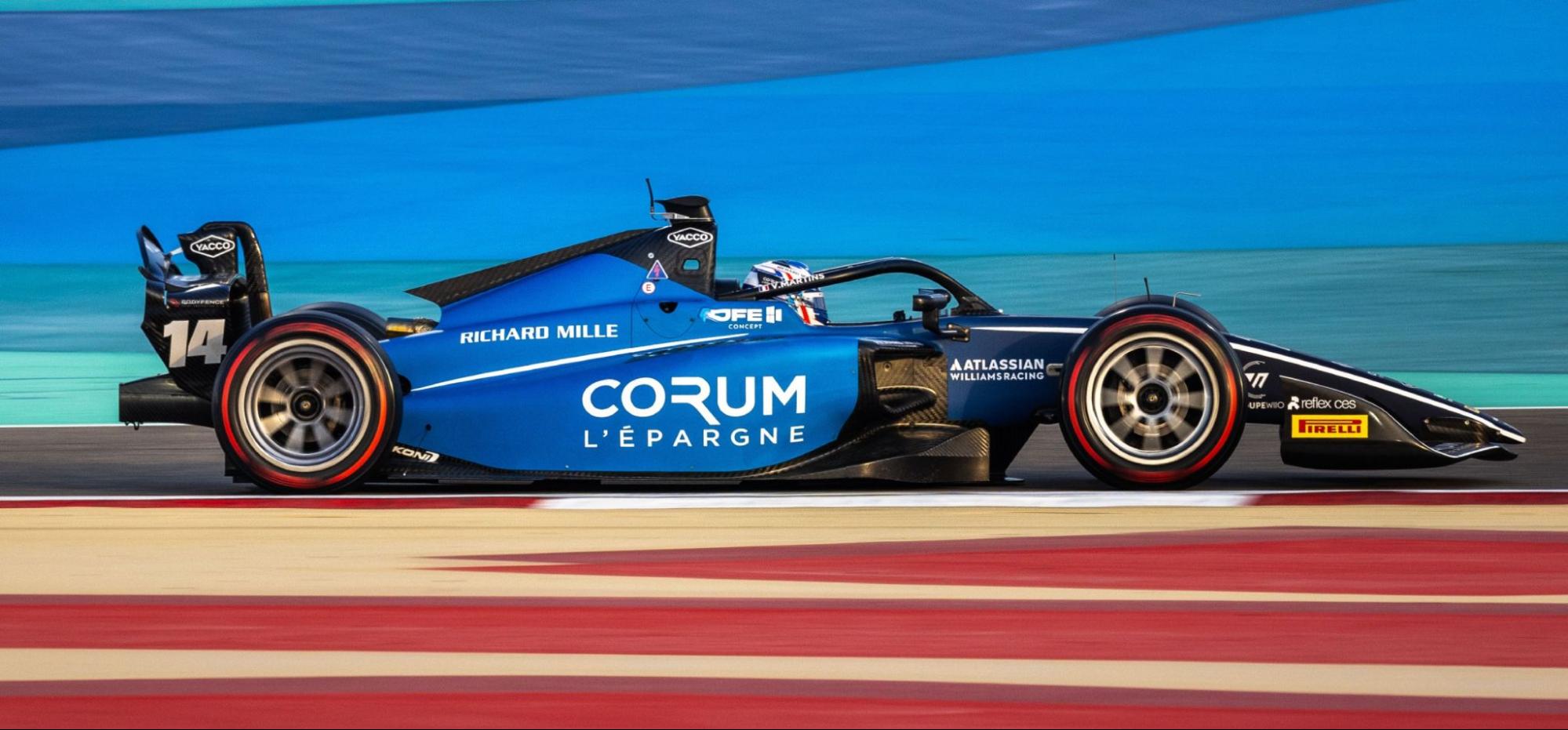
A side view of a Formula 2 car showing the rear wing’s position relative to the rest of the car
By generating downforce, rear wings lend traction to the car and allow its rear tyres to grip the road. This is crucial in high-powered single-seater cars as they are universally rear-wheel drive. Without that grip, it would be very difficult to apply the power to the wheels and transmit it to the road, particularly while exiting corners.
Rear grip also helps drivers enter high-speed corners such as Monza’s Lesmos at pace, even if they are not accelerating.
The angle of the rear wing affects how much downforce it produces, but also how much drag it produces. Like any airfoil there is a critical angle where airflow will stall going over the rear wing and stop producing downforce.
The front wing angle needs to be taken into account when choosing the rear wing angle as the rear wing is the last point of contact for airflow at the top of the car, and is therefore affected by everything in front of it.
An airfoil such as the plane of a rear wing can also sport a Gurney flap: a tab set at an angle to the airfoil that increases downforce by decreasing flow pressure under the wing and increasing pressure above it by delaying flow separation - where fluid (in this case air) detaches from the surface.
The Gurney flap is mounted on the trailing edge of the wing, where flow detaches.
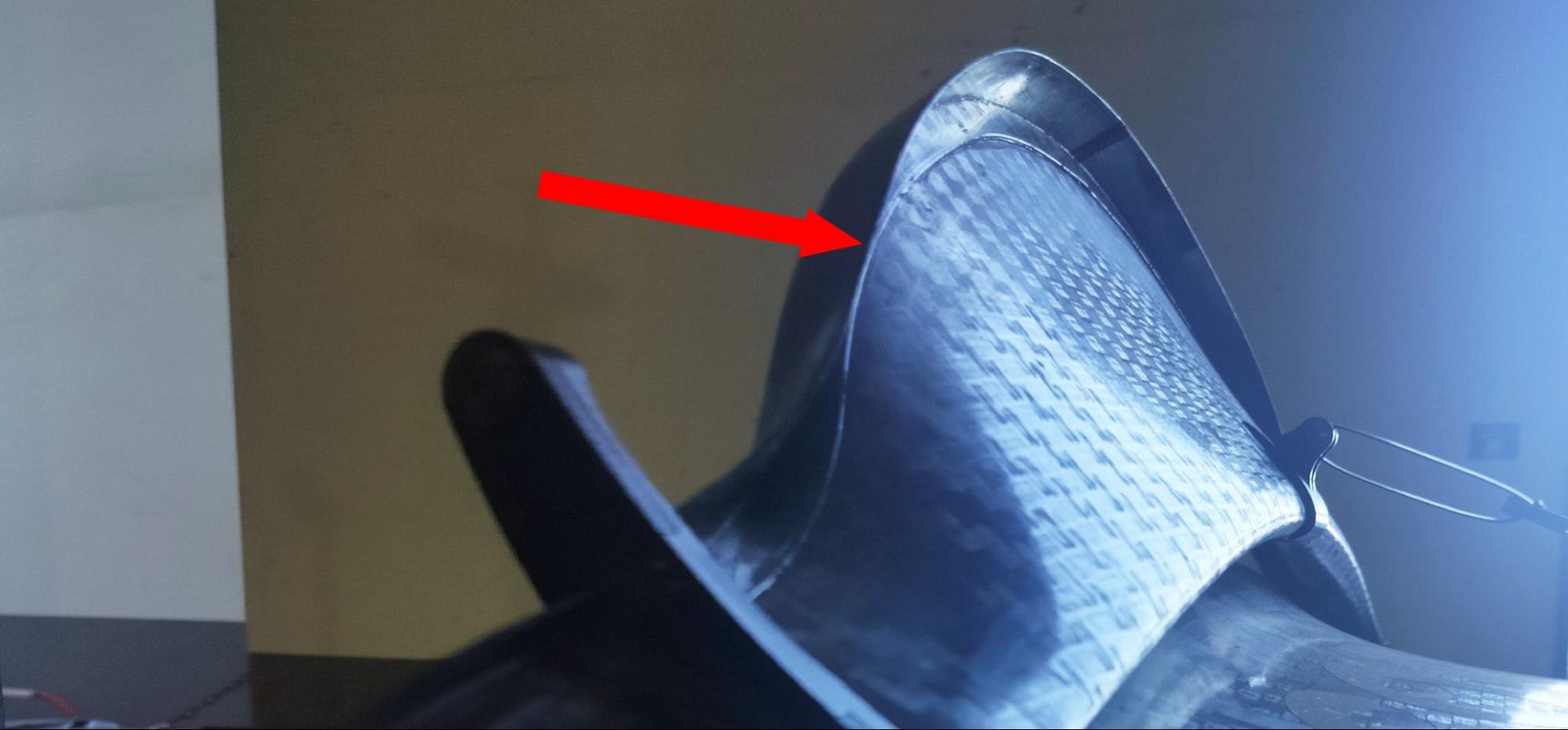
A close-up view of the F2 rear wing showing the position of the Gurney flap, which is much larger on the high downforce configuration
What sets the F2 rear wing apart?
The F2 rear wing comes in three different configurations for low downforce (LDF), medium downforce (MDF), and high downforce (HDF).
There are five central elements to the F2 rear wing: the mainplane, the bottom flap, the topmost flap, and two endplates.
When F2 teams change configurations, they change the top flap of the rear wing. The HDF configuration is only allowed to be used at Monaco, where downforce is key. It also includes a 20 millimetre Gurney flap.

The rear of an F2 car at Monaco showing the high downforce configuration, with red arrows denoting the adjusters that set the angle of the topmost flap
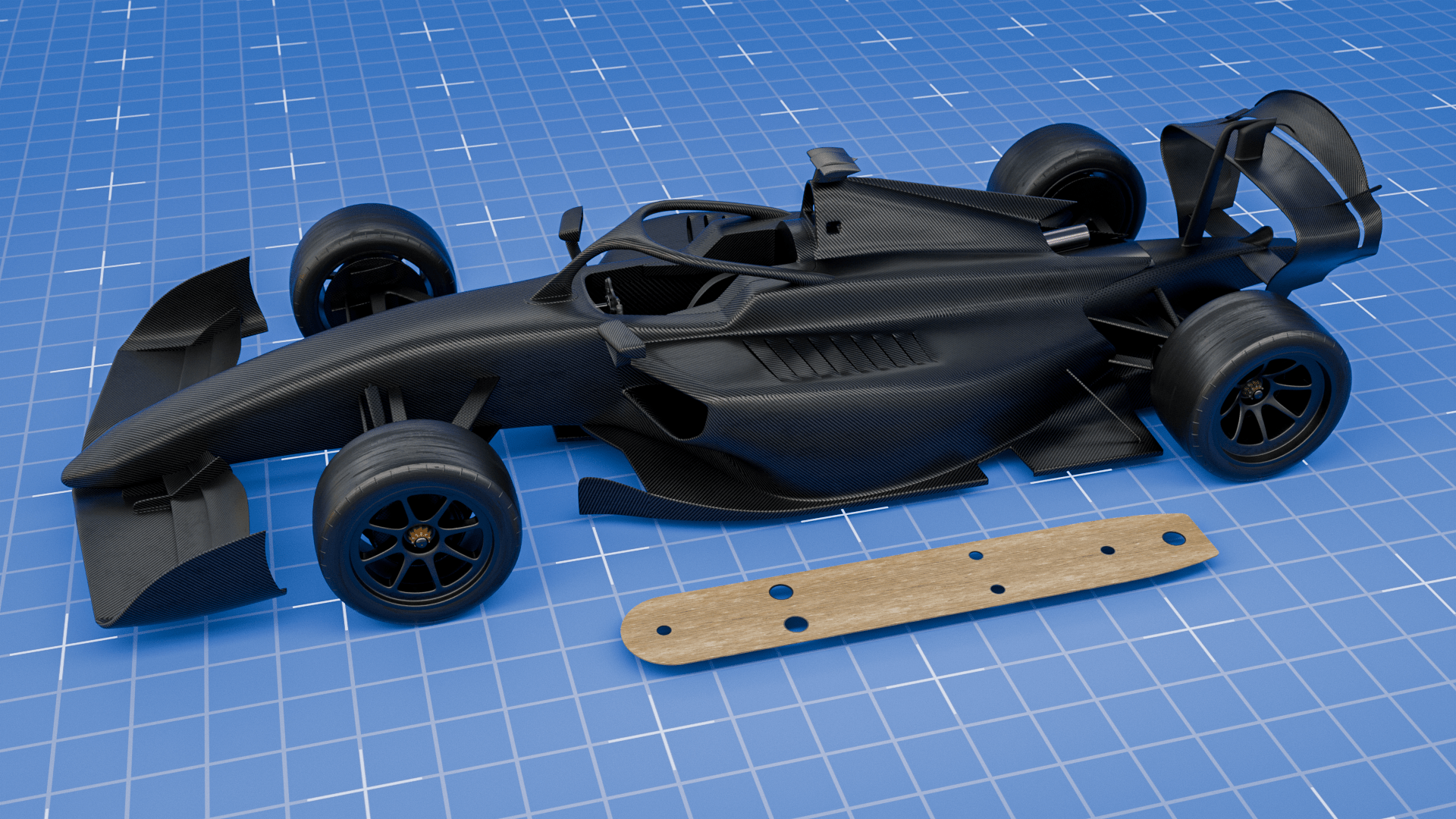
Car, Innovation
What is the plank assembly and skid block and why are they so important in F1 and F2?
The MDF configuration is used at most circuits on the F2 calendar. It has a smaller cross-section than the HDF wing and a 5mm Gurney flap, producing less downforce and drag.
The LDF configuration is almost exclusively used in Azerbaijan, which has a very long straight. This wing has a topmost flap that protrudes at its centre point, reducing its cross-section and therefore reducing the amount of drag and downforce produced.
The F2 rear wing has a curved profile to reduce the amount of air channelled outboard - outwash air - that would otherwise disrupt chasing cars and make it harder to overtake.
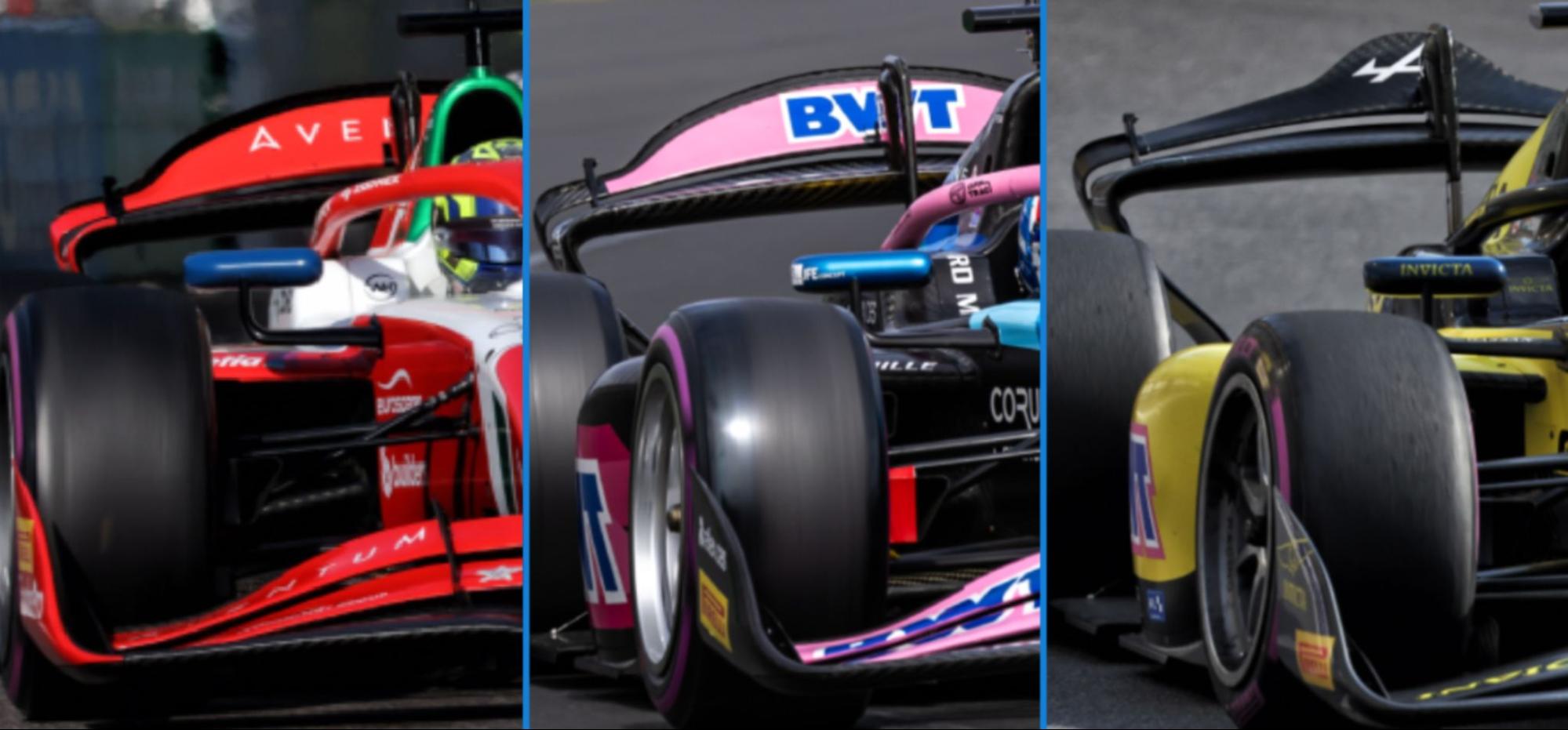
A comparison showing the three F2 rear wing types from left to right: high downforce, medium downforce, and low downforce
Like F1, F2 cars use the drag reduction system (DRS).
This is a hydraulically-activated system triggered when the driver presses a button on their steering wheel, sending an electrical signal to the hydraulic actuator that opens the flap on the rear wing - reducing drag and giving the driver a top-speed boost.
In F2, DRS can only be used after two laps (unless conditions are deemed too poor due to weather or incidents) when the driver is within one second of the car in front at a detection point.
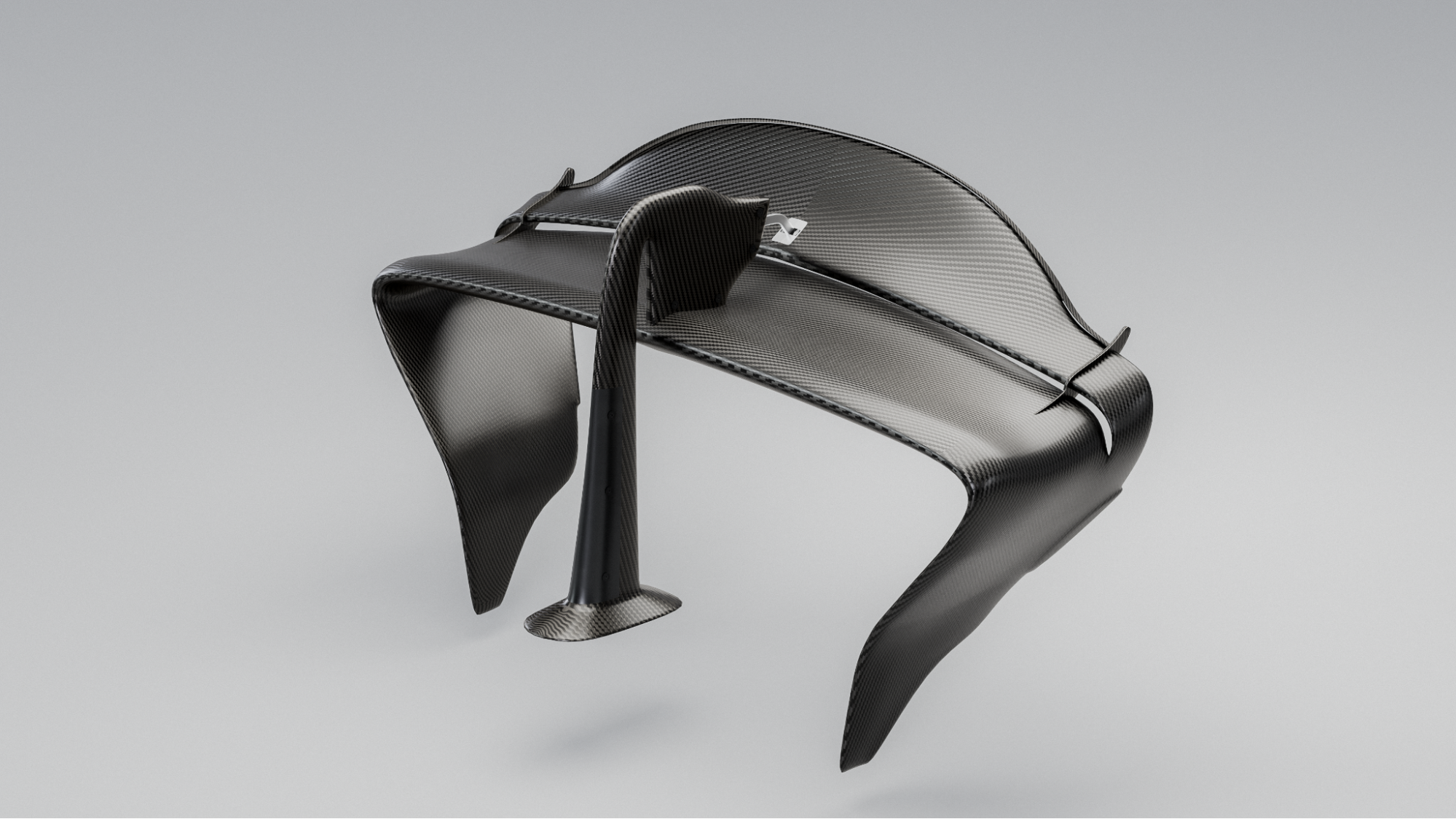
The F2 rear wing with its DRS actuator, which opens the topmost flap and reduces drag in prescribed areas
Unlike F1, F2 teams have very little room to modify their rear wings, which, like the whole car, are a standardised part. Teams can adjust the angle to add more downforce or drag, but the tolerances of the rear wing dimensions are strictly defined in the FIA F2 technical regulations.
The same goes for the DRS flap; Hitech driver Paul Aron was penalised in 2024 for having a DRS opening one millimetre too large.
The rear wing is a simple device and one so demonstrative of motorsport aerodynamics and performance that it’s used liberally on road cars - often arbitrarily.
In championships with super light cars and powerful engines such as F2 and F1, rear wings are critical in providing grip and performance.
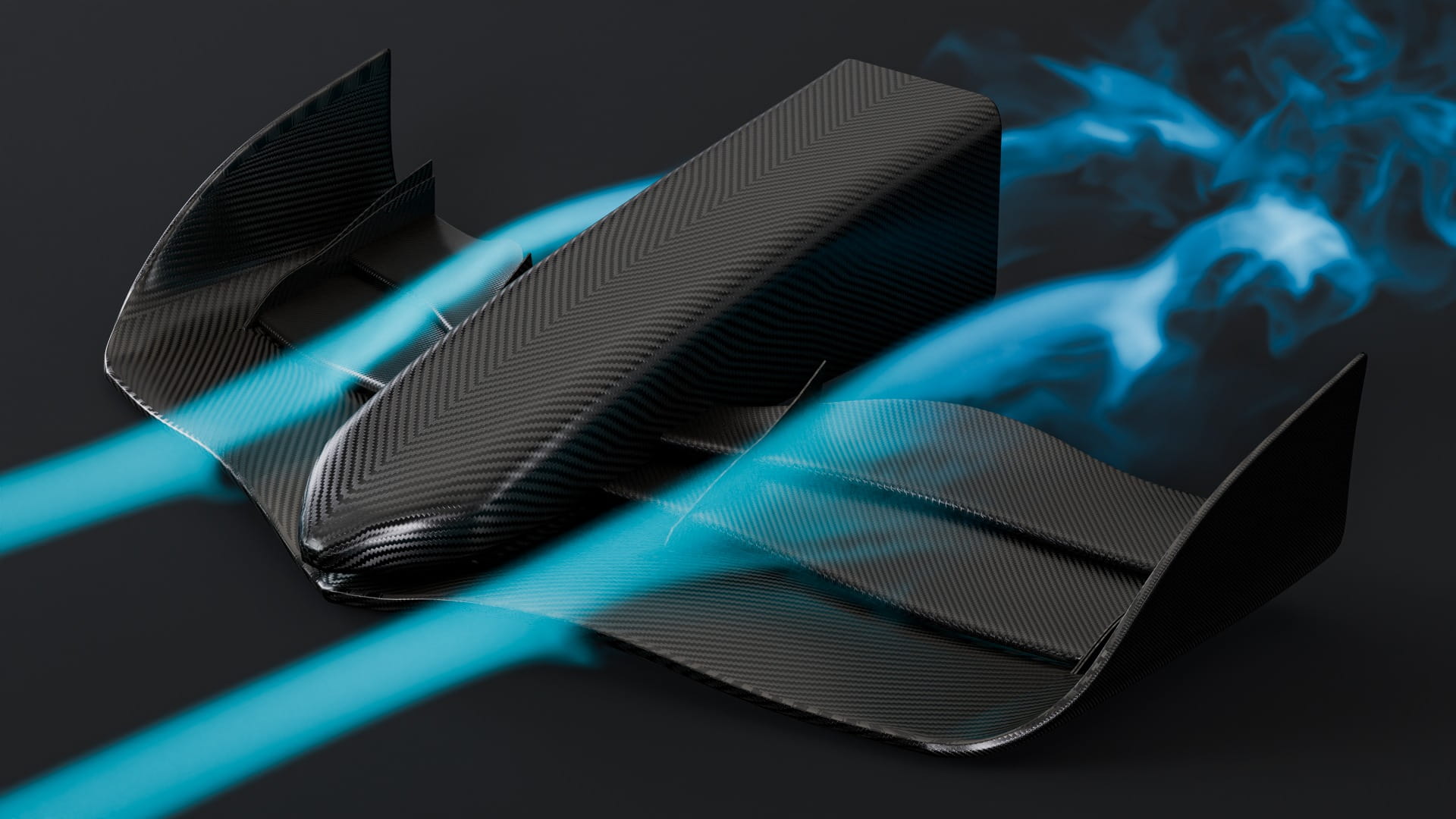
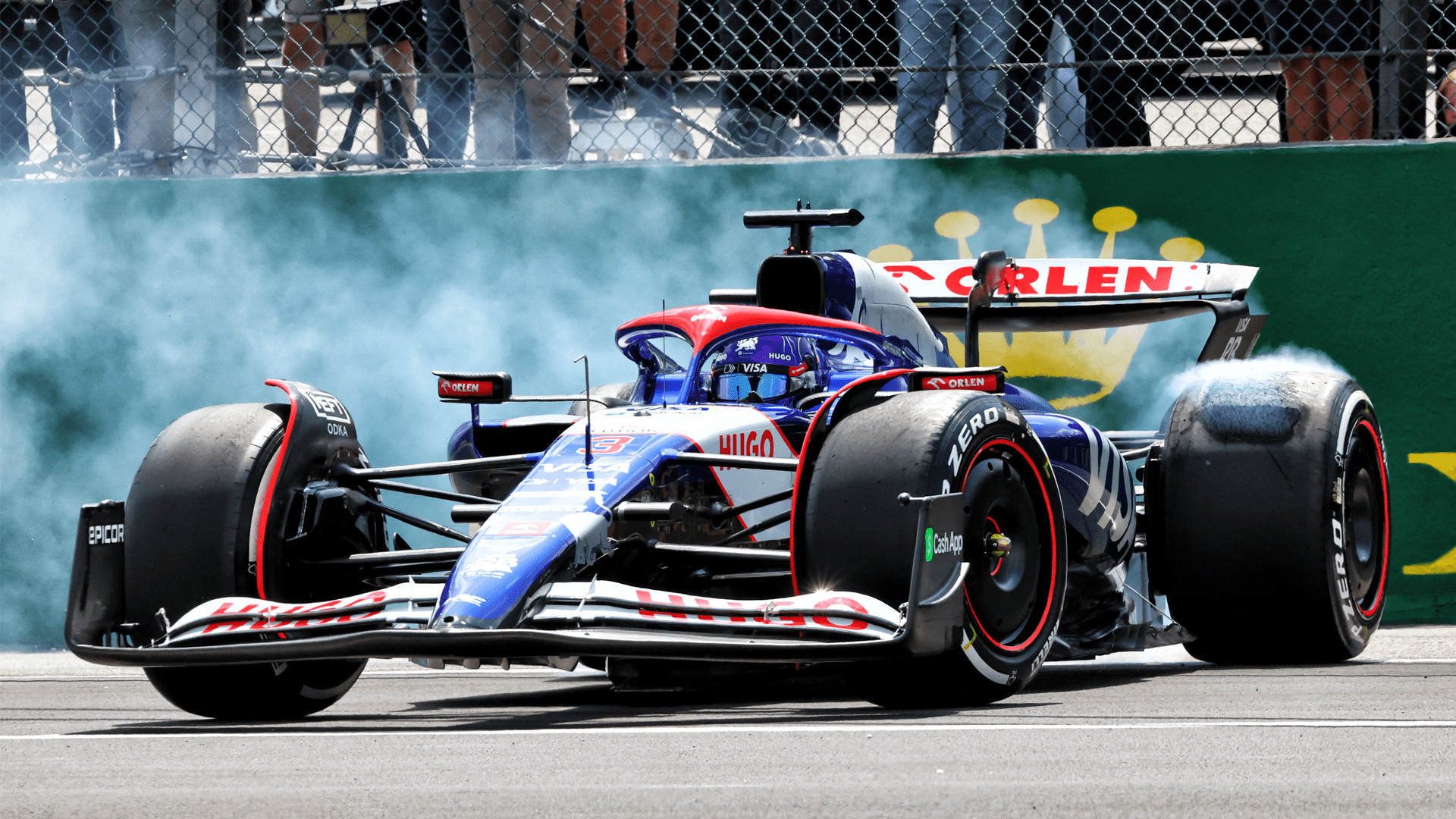
.png?cx=0.5&cy=0.5)
